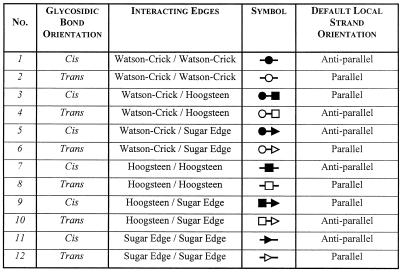Table 2. The 12 families of edge-to-edge base pairs formed by nucleic acid bases, defined by the relative orientations of the glycosidic bonds of the interacting bases (column 2) and the edges used in the interaction (column 3).
Recently proposed symbols for designating each base pair family in secondary structure diagrams are given in column 4. Circles designate Watson–Crick edges, squares Hoogsteen or pyrimidine CH edges, and triangles sugar edges. Solid symbols indicate cis base pairs and open symbols trans base pairs. The local strand orientation that occurs when both bases are in the default anti conformation are in column 5; a syn orientation for one of the nucleotides would imply a reversal of orientation; for the global orientation, the stereochemistry at the phosphate groups has to be considered.

